Sean Bienvenidos A Un Nueva Entrega Un Tanto Especial, Ya Que Tengo El Gusto De Presentaros Ishibutai,



Sean bienvenidos a un nueva entrega un tanto especial, ya que tengo el gusto de presentaros Ishibutai, localizado en la prefectura de Nara data del periodo Asuka(592-710). - En un principio se barajaron hipótesis de que podría haber sido utilizado para espectáculos, en la década de los 30, Ishibutai es un kofun y os estaréis preguntando ¿no se supone que tenían ojo de cerradura? - Los podian a ver de muchos tipos se empiezan a construir en el año 300 al 592 d.c pero eso será otro capítulo de la arqueología y prehistoria japonesa. La tumba pudo pertenecer a Soga no Umako un político y ocupa una extensión de 54 m es la mayor estructura megalítica conocida en Japón. - ¿Hasta cuando estuvo utilizada? la edad de uso os dejará helados se construyó en el siglo VI y estuvo hasta el siglo VII para ser más exactos en este segundo dato en el 626 d.c. - En 1957 fue nombrado patrimonio nacional por la Unesco, ¿Cuánto pesa esta mole? un total de 30 rocas que le suman un peso aproximadamente de 2300 toneladas y las piedras del techo suman una friolera de 77 toneladas aproximadamente. - Espero que os haya gustado y nos vemos en una nueva publicación de arqueología y prehistoria arqueología japonesa. - Welcome to a new, somewhat special installment, as I have the pleasure of introducing you to Ishibutai, located in the Nara prefecture, dating from the Asuka period (592-710). - At first, hypotheses were considered that it could have been used for shows, in the 1930s, Ishibutai is a kofun and you may be wondering, aren't they supposed to have a keyhole? - You could see them of many types, they began to be built in the year 300 to 592 AD but that will be another chapter of Japanese archeology and prehistory. The tomb could have belonged to Soga no Umako, a politician, and occupies an area of 54 m, it is the largest megalithic structure known in Japan. - Until when was it used? The age of use will leave you frozen. It was built in the 6th century and was there until the 7th century to be more exact in this second data in 626 AD. - In 1957 it was named a national heritage site by UNESCO. How much does this mass weigh? a total of 30 rocks that add up to a weight of approximately 2,300 tons and the stones of the roof add up to a whopping 77 tons approximately. - I hope you liked it and see you in a new publication of archeology and prehistory Japanese archaeology. - 新しい、ちょっと特別な回へようこそ。今回は、飛鳥時代 (592 ~ 710 年) に遡る、奈良県にある石舞台についてご紹介したいと思います。 - 当初は、1930 年代にショーに使用されたのではないかという仮説が考えられていました。 石舞台は古墳ですが、鍵穴があるはずではないかと疑問に思うかもしれません。 - さまざまなタイプのそれらを見ることができ、それらは西暦 300 年から 592 年に建てられ始めましたが、それは日本の考古学と先史学の別の章となるでしょう。 この墓は政治家蘇我馬子の墓と考えられ、面積は54メートルあり、知られている巨石建造物としては日本最大である。 - いつ頃まで使われていましたか? この 2 番目のデータは西暦 626 年で、6 世紀に建てられ、より正確には 7 世紀まで存在していました。 - 1957 年にユネスコによって国家遺産に指定されましたが、この塊の重さはどれくらいでしょうか? 30 個の石を合計すると約 2,300 トン、屋根の石を合計すると約 77 トンにもなります。 - 気に入っていただければ幸いです。考古学と先史時代の日本の考古学の新しい出版物でお会いしましょう。
More Posts from Noticiasarquelogicasjaponesas and Others


Sean bienvenidos, a una nueva aclaración, arqueológica-histórica, en esta ocasión aclararemos y desmentir errores aplicados a la arqueología .¿Por qué la cerámica más antigua se encuentra en Asia y no en el mediterráneo?. - En cierto modo, muchas de las cosas más antiguas se encuentran en mesopotamia, pero no todo ya que muchas cosas surgieron en china y japón. En este caso, hablaremos de la cerámica, los vestigios más antiguos los podemos encontrar en el archipiélago nipón de hace 16.500 años de antigüedad durante el periodo Jōmon(Neolítico japonés lo que equivaldría al neolítico Europeo), eso era lo que se sabía hasta ahora, pero restos arqueológicos rescatados en una cueva de china, datan de una friolera de 20.000años, se tenía entendido que la cerámica apareció hace 10.000 años aproximadamente, ¿Por que se nos ocultan estos datos?, pues muy sencillo, porque no concuerdan con la recta cronológica estipulada, además de no generar interés para su estudio. - La foto número 1, son los restos de la cerámica china. - La foto número 2 es la cerámica de la cultura Jōmon. - Cualquier aportación siempre es bienvenida, ya que esta publicación sirve como aclarar ideas y para debatir. os deseo un buen día y un fuerte abrazo. - 新しい考古学と歴史の解明へようこそ。今回は、考古学に適用された誤りを明らかにし、否定します。なぜ最も古いセラミックが地中海ではなくアジアで見つかったのでしょうか。 - ある意味で、最も古いものの多くはメソポタミアで発見されていますが、中国と日本で発生したものほど多くはありません。今回は陶磁器についてお話しますが、16、500年前の縄文時代(ヨーロッパの新石器時代に相当する日本の新石器時代)の日本列島で最も古い遺跡がありますが、これは今まで知られていましたが、中国の洞窟で救出された考古学的遺跡は、なんと2万年前のもので、約1万年前に陶磁器が登場したと理解されていましたが、なぜこれらのデータが私たちから隠されているのでしょうか。直線と一致しないため、非常に単純です。その研究への関心を生み出さないことに加えて、年代順に規定された。 - 写真1は中国の陶器の残骸です。 写真2は縄文文化の陶器です。 この投稿は説明と議論として役立つので、どんな入力でもいつでも歓迎します。良い一日と大きな抱擁をお祈りします。 - Welcome to a new archaeological-historical clarification, this time we will clarify and deny errors applied to archeology. Why is the oldest ceramic found in Asia and not in the Mediterranean ?. - In a way, many of the oldest things are found in Mesopotamia, but not all as many things arose in China and Japan. In this case, we will talk about ceramics, the oldest remains can be found in the Japanese archipelago 16,500 years ago during the Jomon period (Japanese Neolithic, which would be equivalent to the European Neolithic), that was what was known until now, but archaeological remains rescued in a cave in China, dating from a whopping 20,000 years, it was understood that the ceramics appeared approximately 10,000 years ago, why are these data hidden from us ?, Well very simple, because they do not agree with the straight line stipulated chronological, in addition to not generating interest for its study. - Photo number 1 is the remains of Chinese pottery. Photo number 2 is the pottery of the Jomon culture. Any input is always welcome, as this post serves as clarification and discussion. I wish you a good day and a big hug.




Sean bienvenidos japonistasarqueologicos a una nueva entrega del país del sol naciente en la que os, hablaré del Santuario Arashihiban, una vez dicho esto pónganse cómodos que empezamos. - El santuario Arashihiban, se localiza en la prefectura de Miyagi al noreste de Japón, en la isla de Honshu. Aragshinkan ¿A qué dios está dedicado? Es un dios que está envuelto en muchos misterios, además, es adorado en las regiones de Tohoku y Kanto. Arashiben-jinja se localiza en la ciudad de Tagajo y se desconoce la fecha exacta de cuando se construyó, pero consta en los registros del año 1774. - ¿En qué consiste el Tsugarusoto Sangunshi? Se trata de un antiguo documento, que fue descubierto por Kihachiro Wada. Sin embargo, ahora se podría tratar de una falsificación, Arahabaki aparece más el nombre de una familia que gobernó la región de Tsugaru(correspondería a los terratenientes europeos en Japón se les conoce como daimyō, en hiragana みょう). Dejen en los comentarios vuestra opinión, para debatirlo. - Espero que os haya gustado y nos vemos en próximas publicaciones que pasen una linda semana. Welcome Japanese archaeologists to a new installment from the land of the rising sun in which I will talk about the Arashihiban Shrine, so once you have said that, make yourselves comfortable and let's get started. - Arashihiban Shrine is located in Miyagi Prefecture in northeastern Japan, on the island of Honshu. Aragshinkan Which god is it dedicated to? It is a god that is shrouded in mystery and is worshipped in the Tohoku and Kanto regions. Arashiben-jinja is located in the city of Tagajo and the exact date of its construction is unknown, but it is recorded as being built in 1774. - What is the Tsugarusoto Sangunshi? It is an ancient document, which was discovered by Kihachiro Wada. However, it could now be a forgery, Arahabaki appears more the name of a family that ruled the Tsugaru region (corresponding to European landowners in Japan are known as daimyō, in hiragana みょう). Leave in the comments your opinion, for discussion. - I hope you liked it and see you in future posts have a nice week.
日本の考古学者の皆さん、日出ずる国からの新しい回にようこそ!今回は嵐播神社についてお話しします。 - 嵐播神社は宮城県にある。荒神館 どの神様を祀っているのですか?謎に包まれた神で、東北地方と関東地方で信仰されている。荒祭神社は多賀城市にあり、正確な創建年代は不明だが、1774年に創建されたと記録されている。 - 津軽外三郡誌とは?和田喜八郎によって発見された古文書である。しかし、現在では偽書である可能性もあり、アラハバキはむしろ津軽地方を支配していた一族の名前に見える。議論のために、あなたの意見をコメントに残してください。 - それではまた、良い一週間をお過ごしください。
Capítulo 4: El origen de un país y su prehistoria, un paseo por la historia del país del sol naciente. - El Pleistoceno: ¿Cómo era el clima en el pleistoceno a través de los registros? Los testigos geológicos y los foraminíferos que nos permiten saber cómo era el clima en aquella época, en Japón era muy húmedo y muy frío, hay que tener en cuenta que las temperaturas actuales no son las mismas que hace 1.2 millones de años. ¿Es verdad, que los humanos en el pleistoceno extinguieron a mucha megafauna? Lo cual es una verdad a medias, ya que el ser humano fue una de las muchas causas, por el hecho de que como las temperaturas fueron uno de los factores claves en sus extinciones, por el hecho de que si una especie necesita de determinada para sobrevivir y el ser humano y el clima acaban con ella, pues, hay tenemos el golpe de gracia. Se sabe que en Hokkaido había Mamuts. El territorio Nippo, estaba unido al continente chino y correano en la zona sur por el estrecho de Tsushima o también denominado Paleo - Honshu y al norte por la isla de Sanjin. Como veíamos en el capítulo anterior, ¿Cómo se llaman las placas tectónicas que forman el archipiélago? Está compuesta por cuatro, Placa del Pasifico, EuroAsiática y NorteAmericana. Esto jugará, un papel fundamental, en la conformación del archipiélago japonés. Como ya mencione en el capítulo 3, posiblemente serían un conjunto de pequeñas islas que se fueron cambiando hasta conformar lo que vemos actualmente como Japón. - Mientras unas se indican, otras emergen y así a la inversa, esto deja registros geológicos. Algunas prefecturas donde se han encontrado restos humanos: prefecturas de Hyogo Shizuoka. - Chapter 4: The origin of a country and its prehistory, a walk through the history of the country of the rising sun. - The Pleistocene: What was the climate like in the Pleistocene across records? The geological witnesses and foraminifera that allow us to know what the climate was like at that time, in Japan it was very humid and very cold, we must take into account that current temperatures are not the same as 1.2 million years ago. Is it true that humans in the Pleistocene extinct many megafauna? Which is a half truth, since the human being was one of the many causes, due to the fact that since temperatures were one of the key factors in their extinctions, due to the fact that if a species needs a certain amount to survive and the human being and the climate put an end to it, well, there we have the coup de grace. It is known that there were Mammoths in Hokkaido. The Nippo territory was joined to the Chinese and Correan continent in the south by the Strait of Tsushima or also called Paleo-Honshu and to the north by the island of Sanjin. - As we saw in the previous chapter, what are the names of the tectonic plates that form the archipelago? It is made up of four, Pacific, Euro-Asian and North American Plates. This will play a fundamental role in the formation of the Japanese archipelago. As I already mentioned in chapter 3, they were possibly a set of small islands that changed until they formed what we currently see as Japan. While some are indicated, others emerge and so on, this leaves geological records. Some prefectures where human remains have been found: Hyogo Shizuoka prefectures. - 第4章 国の成り立ちと先史、日出ずる国の歴史を歩く。 - 更新世: 記録に残る更新世の気候はどのようなものでしたか? 地質学的証拠と有孔虫は、当時の日本がどのような気候であったかを知ることを可能にします。日本は非常に湿気が多く、非常に寒かったため、現在の気温は 120 万年前と同じではないことを考慮する必要があります。 更新世の人類が多くの巨大動物を絶滅させたというのは本当ですか? これは半分真実です。なぜなら、温度が絶滅の重要な要因の1つであるという事実、そして種が生き残るためにある程度の量が必要であるという事実のため、人間は多くの原因の1つであるからです。人間と気候がそれに終止符を打ったのです。まあ、ここで私たちは幸運をもたらしました。 北海道にはマンモスがいたことが知られています。 日豊領土は、南は対馬海峡、または古本州とも呼ばれ、北は三津島によって中国大陸とコレリア大陸につながっていました。 - 前の章で見たように、列島を形成する構造プレートの名前は何ですか? 太平洋プレート、ヨーロッパ・アジアプレート、北米プレートの4枚で構成されています。 それは日本列島の形成に根本的な役割を果たします。 第 3 章ですでに述べたように、それらはおそらく、私たちが現在日本として見ているものを形成するまでに変化した小さな島の集まりであった可能性があります。 示されているものもあれば、出現しているものもあり、これにより地質学的記録が残ります。 人骨が発見された都道府県: 兵庫県 静岡県。 -


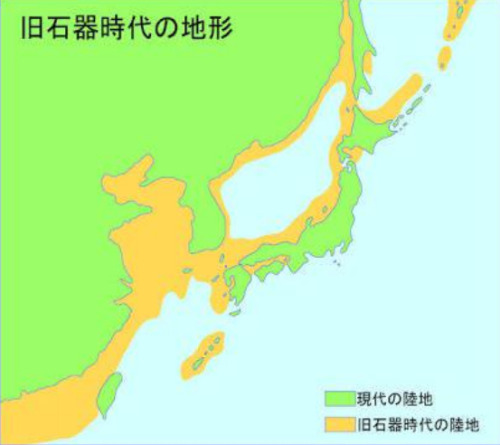
Sean bienvenidos, japonistasarqueologicos a una nueva entrega de historia nipona en la que os explico la evolución del artefacto Tanegashima, una vez dicho esto pónganse cómodos, que empezamos. - Fue introducido por los portugueses en 1543, en pleno periodo Muromachi desde la isla que lleva su mismo nombre, el polvo negro químico fue inventado por los chinos en el siglo IX, se usaba para los fuegos artificiales, después se trasladó a otros ámbitos. - Se cuenta que cuando llegó a Japón, un herrero vendió a su hija para poder producir dicho artefacto, era un producto raro y poco efectivo, no todos los samuráis la utilizaban, ya que muchos preferían, todavía, las técnicas tradicionales más efectivas, además la consideraban un elemento deshonroso. El hecho más notable fue el 28 de junio de 1575 en Nagashino, en la Provincia de Mikawa. El clan de Oda Nobunaga se enfrentaba contra el clan Takeda conocido por su temible caballería, Oda Nobunaga emplearía unas empalizadas para proteger a sus soldados de las sucesivas cargas, en esta batalla se usaría el artefacto en masa. Esto lo podéis ver en el famoso videojuego de Total War: Shogun 2. - Esperó que os haya gustado y nos vemos en próximas publicaciones que pasen una buena semana. - 日本の考古学者の皆さん、種子島の遺物の変遷を説明する新しい日本史へようこそ。 - 室町時代中期の 1543 年に、同じ名前の島からポルトガル人によって導入されました。化学黒色火薬は 9 世紀に中国人によって発明され、花火に使用されましたが、その後他の用途に移りました。地域。 - 彼が日本に到着したとき、鍛冶屋はその工芸品を製造できるように娘を売ったと言われています。それは希少で非効率な製品でした。多くの武士が依然として最も効果的な伝統的な技術を好んだため、すべての武士がそれを使用したわけではありません。彼らはそれを考慮しました不名誉な要素。 最も注目すべき出来事は、1575 年 6 月 28 日に三河国長篠で起こった。 織田信長の一族は、恐ろしい騎兵で知られる武田家と対峙しました。織田信長は連続突撃から兵士を守るために柵を使用しました。この戦いでは、アーティファクトが一斉に使用されました。 これは、有名なビデオ ゲーム Total War: Shogun 2 で見ることができます。 - 気に入っていただければ幸いです。今後の投稿でお会いしましょう。良い一週間をお過ごしください。 - Welcome, Japanesearchaeologicalists, to a new installment of Japanese history in which I explain the evolution of the Tanegashima artifact. Having said that, make yourself comfortable, let's begin. - It was introduced by the Portuguese in 1543, in the middle of the Muromachi period from the island that bears the same name. The chemical black powder was invented by the Chinese in the 9th century. It was used for fireworks, then it moved to other areas. - It is said that when he arrived in Japan, a blacksmith sold his daughter to be able to produce said artifact. It was a rare and ineffective product. Not all samurai used it, since many still preferred the most effective traditional techniques. They considered it a dishonorable element. The most notable event was on June 28, 1575 in Nagashino, Mikawa Province. Oda Nobunaga's clan faced the Takeda clan, known for its fearsome cavalry. Oda Nobunaga would use palisades to protect his soldiers from successive charges. In this battle, the artifact would be used en masse. You can see this in the famous video game Total War: Shogun 2. - He hoped you liked it and see you in future posts, have a good week.
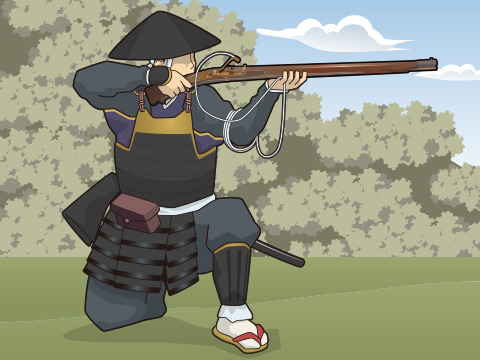

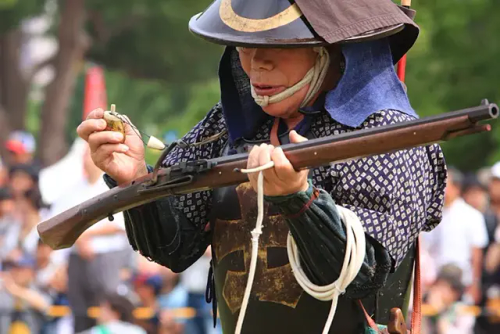
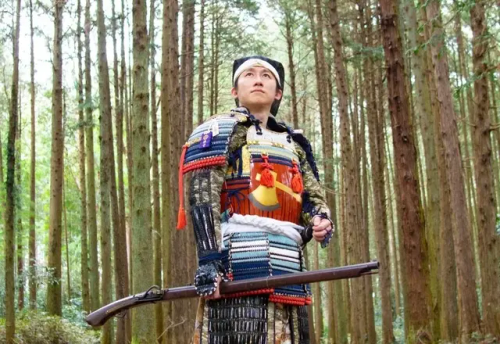
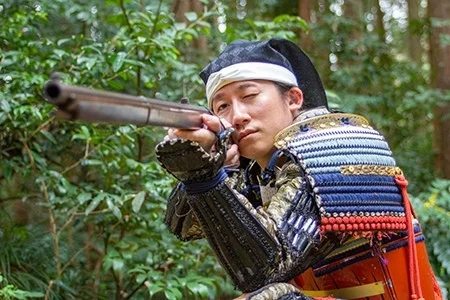

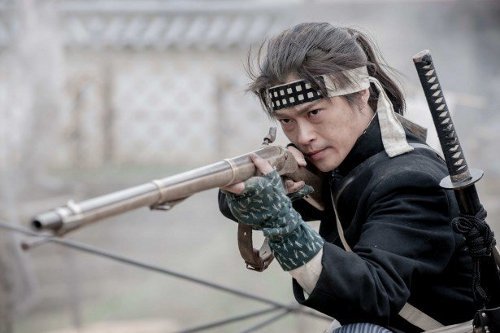
https://www.instagram.com/noticiasarquelogicasjaponesas?igsh=cHptNTJxdWZoNm83

Sean bienvenidos a una nueva publicación en la cual os voy a compartir mi cuenta de Instagram, en la cual comparto todo lo que hago aquí en Tumblr a modo de reel, también comparto en el mismo formato lo que hago de mi otro blog. Hago muchos directos, de Japón ya sea de historia, arqueología, cultura entre otros puntos espero que os guste y nos vemos en próximas publicaciones hasta la próxima.
-
新しい投稿へようこそ。ここでは私の Instagram アカウントを共有します。ここでは、私がここで行っているすべてのことをリールとして Tumblr で共有します。また、他のブログで行っていることも同じ形式で共有します。私は歴史、考古学、文化など、日本からたくさんのライブショーを行っています。気に入っていただければ幸いです。また次回までお会いしましょう。
-
Welcome to a new post in which I'm going to share my Instagram account, in which I share everything I do here on Tumblr as a reel, I also share in the same format what I do on my other blog. I do a lot of live broadcasts, from Japan, whether it's history, archaeology, culture, among other topics. I hope you like it and I'll see you in future posts until next time.

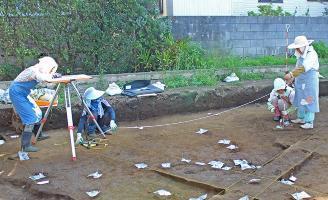
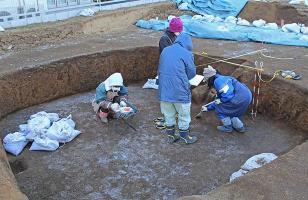

Sean bienvenidos japonistasarqueológicos, a una nueva entrega de arqueología japonesa, una vez dicho esto pónganse cómodos que empezamos. - Antes que nada:¿Qué entendemos por una excavación arqueológica? Consiste en extraer los restos materiales de las culturas del pasado a esto se le llama cultura arqueológica por ejemplo: los restos viviendas de fosa y hoyos. Los restos arqueológicos, se localizan en la Ciudad de Narashino, en la prefectura de Chiba, los restos podrían tratarse del periodo jomon (15.000/16.000 a.c) - Espero que os haya gustado y nos vemos en próximas publicaciones, que pasen una buena semana. - 日本の考古学者たちよ、ようこそ。そう言われたら、くつろいで、さっそく始めましょう。 - まず、考古学的発掘とはどういうことかというと、過去の文化の物質的遺構を取り出すことであり、これを考古学的文化と呼びます。例えば、竪穴住居跡やピット跡などです。千葉県習志野市にあるこの遺跡は、縄文時代(紀元前15,000~16,000年)のものと思われます。 - 気に入っていただけたでしょうか、また今後の記事でお会いしましょう、良い一週間をお過ごしください。 Welcome, Japanese archaeologists, to a new installment of Japanese archaeology, and once that's been said, make yourselves comfortable and let's get started. - First of all: What do we mean by an archaeological excavation? It consists of extracting the material remains of the cultures of the past, this is called archaeological culture, for example: the remains of pit dwellings and pits. The archaeological remains, located in Narashino City, Chiba Prefecture, may date back to the Jomon period (15,000/16,000 BC). - I hope you liked it and see you in future posts, have a nice week.
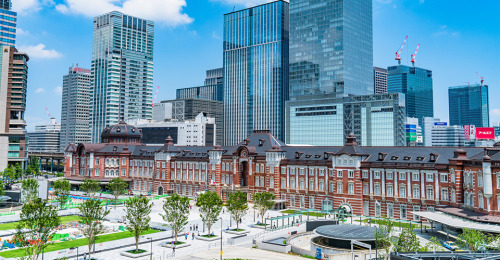
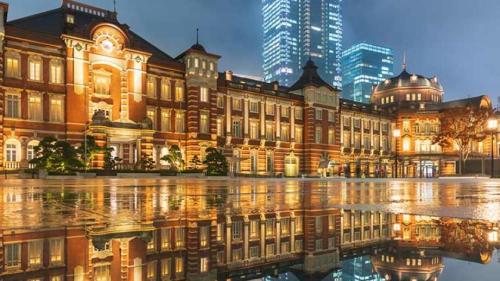
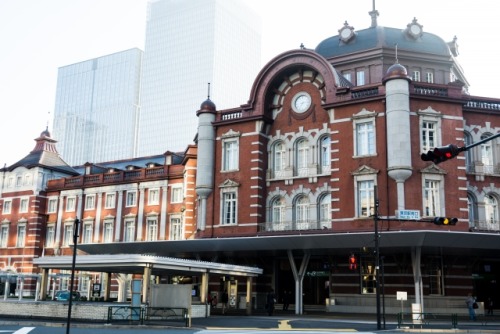
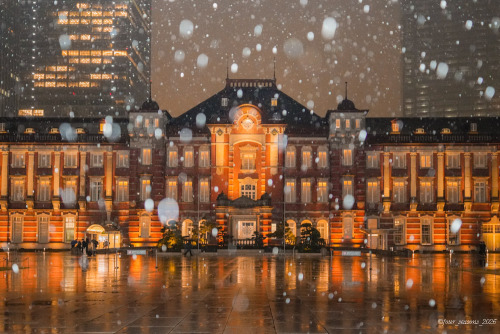
Sean bienvenidos japonistasarqueológicos, a una nueva entrega en la cual hablaremos de la famosa estación de Tokyo, uno de los pocos edificios que ha sobrevivido al paso del tiempo, ya que tras la operación doolittle y el gran terremoto de Tokio de 1923, Tokio ha sido muy remodelada, dicho esto pónganse cómodos que empezamos. - En 1908, comenzó su construcción en lo que respecta a la estación central, en 1914 empezó a funcionar, en la era Taisho 1915 Se inauguró el hotel de la estación de Tokio. En el año 1923 tiene lugar el Gran Terremoto de Kanto y el edificio de la estación no está particularmente dañado, se pudo reparar, pero la ciudad de Tokyo fue remodelada por completo y en 2007 realizaron trabajos de restauración, terminado en 2012. Hay que recordar que ha sufrido muchas restauraciones, ya que la de 1945 fue la más letal de todas. - Espero que os haya gustado y nos vemos en próximas publicaciones ¿Conocían este edificio y su historia? Que pasen una buena semana. - 今回は、有名な東京駅についてお話します。ドゥーリトル作戦や1923年の東京大震災の後、東京は大きく改造されましたが、その中でも数少ない時代の流れに耐えた建物の一つです。 - 1908年、中央駅の建設が始まり、1914年に開業、大正時代の1915年には東京ステーションホテルがオープンしました。1923年に関東大震災が起こり、駅舎は特に被害はなく、修復されましたが、東京の街は完全に改造され、2007年に修復工事が行われ、2012年に完成しました。1945年の震災が最も致命的であったため、何度も修復が行われたことを忘れてはならない。 - この建物とその歴史を知っていましたか?それでは、今週もよろしくお願いします。 - Welcome to a new installment in which we will talk about the famous Tokyo Station, one of the few buildings that has survived the passage of time, since after operation doolittle and the great Tokyo earthquake of 1923, Tokyo has been greatly remodelled, that said, make yourselves comfortable and let's get started. - In 1908, construction began on the Central Station, which became operational in 1914, and in the Taisho era 1915, the Tokyo Station Hotel was opened. In 1923 the Great Kanto Earthquake took place and the station building was not particularly damaged, it was repaired, but the city of Tokyo was completely remodelled and in 2007 restoration work was carried out, completed in 2012. It should be remembered that it has undergone many restorations, as the one in 1945 was the most lethal of them all. - I hope you liked it and see you in future posts. Did you know this building and its history? Have a nice week.

Sean bienvenidos, japonistasarqueológicos a una nueva entrega en esta ocasión os presento a uno de los arqueólogos que excavan en el yacimiento del Toro en la arqueología de posguerra. - ¿Qué es la arqueología de posguerra? Disciplina, que abarca la década de 1947-1999 tras la 2 guerra mundial, Japón se dedicó a realizar excavaciones en masa, además de salir de la situación de posguerra, mejorando el país e invirtiendo en el patrimonio cultural, para que la población estuviera entretenida con otros quehaceres por ejemplo en la década de los 50 surge el famoso milagro Japonés. - Nuestro personaje en esta ocasión se trata de, kenichi Miura nacido en 1932, después de la guerra en japón surge un movimiento llamado Bunka federación y todas las escuelas querían hacer algo por la cultura. Fue una gran labor por parte del país del sol naciente a pesar de la situación en la que se encontraba digno de administración. - Espero que os haya gustado y nos vemos en próximas publicaciones que pasen una buena semana. 日本の考古学者たちよ、戦後の登呂遺跡考古学の新連載へようこそ。 - 戦後考古学とは何か?第二次世界大戦後の1947年から1999年の10年間をカバーする学問分野であり、日本は戦後の状況を離れ、国を改善し、文化遺産に投資することに加えて、国民が他の仕事で楽しまれるように、大規模な発掘に専念していた、例えば、50年代の10年間で有名な日本の奇跡が生じた。 - 今回の登場人物は、1932年生まれの三浦健一です。 戦後、日本では文化連盟という運動が起こり、各学校が文化のために何かをしようとしました。日出づる國の行政にふさわしい状況にもかかわらず、これは偉大な仕事であった。 - それでは、また次号でお会いしましょう。 良い一週間を。 Welcome, Japanese archaeologists, to a new installment of the post-war archaeology of the Toro archaeological site. - What is post-war archaeology? Discipline, which covers the decade of 1947-1999 after World War II, Japan was dedicated to mass excavations, in addition to leaving the post-war situation, improving the country and investing in cultural heritage, so that the population was entertained with other tasks, for example in the decade of the 50's the famous Japanese miracle arose. - Our character on this occasion is Kenichi Miura, born in 1932. After the war in Japan, a movement called Bunka Federation arose and all the schools wanted to do something for culture. It was a great work on the part of the country of the rising sun in spite of the situation in which it found itself worthy of administration. - I hope you liked it and see you in the next publications. Have a nice week.
for more information/詳細については:https://www.shizuoka-toromuseum.jp/toro-site/people/people-intervew01/

Sean bienvenidos japonistasarqueológicos a una nueva noticia de arqueología en esta ocasión nos trasladamos al periodo Jomon jidai ¿Cómo vivían los terremotos y los tsunamis en la prehistoria los antiguos japoneses ? ya en una publicación anterior hablamos sobre un tsunami en Chile pues después de hacer un poco una predicción científica sobre dicho tema, dicho esto pónganse cómodos que comenzamos nuestro viaje. - ¿Cuándo empezó el periodo Jomon? Hace unos 17.500 a 16.500 y finalizó alrededor del año 300 y para no liaros con fechas aproximadas lo situaremos en el 15.500 antes de cristo, cada día salen nuevos hallazgos que hacen restablecer la fecha de inicio. ¿Dónde se han encontrado los restos de sedimentación estratigráfica? Fueron encontrados en la ciudad de Fujisawa, en la prefectura de Kanagawa,la cual anunció que se confirmaron mareas altas en el período Jomon tardío hace unos 2900 años dichos sedimentos se creen que son tsunamis en el sitio de Katase Miyahata. - ¿Cómo se crean los tsunamis? Son un efecto causado por el movimiento de las placas tectónicas que están ligadas a otro gran fenómeno natural los terremotos. ¿Cómo se averiguo esta capa de concreción sedimentaria? Se realizaron sondeos a los cuales se les aplicó el radiocarbono catorce. La mayor parte de la ciudad era mar a finales del período Jomon y se estima que el sitio de excavación fue una esquina frente a la bahía al final de dicho período. Espero que os guste y cuando esté más libre de la universidad os traigo muchas más un cordial saludo. - 考古学ジャポニスタを新しい考古学ニュースに歓迎します。今回は縄文時代に移りますが、先史時代の古代日本の地震と津波はどのように生きていましたか?前回の投稿で、チリの津波についてはすでに話しました。このテーマについて少し科学的な予測をした後、それを言って、快適になって旅行を始めましょう。 - 縄文時代はいつ始まりましたか?約17,500〜16,500年前、300年頃に終了しました。おおよその日付と混同しないように、紀元前15,500年に配置します。毎日、開始日をリセットする新しい発見があります。層序堆積物の残骸はどこで発見されましたか?神奈川県藤沢市で発見され、約2900年前の縄文時代後期に満潮が確認されたと発表されており、宮畑遺跡の津波と考えられています。 - 津波はどのように発生しますか?それらは、別の大きな自然現象である地震に関連する構造プレートの動きによって引き起こされる効果です。この堆積物の層はどのようにして発見されましたか?放射性炭素14が適用されたサウンディングが実行されました。 縄文時代末期にはほとんどの都市が海になっており、発掘現場は縄文時代末期の湾に面した角だったと推定されています。あなたがそれを気に入ってくれることを願っています。私が大学から解放されたら、もっとたくさんの心のこもった挨拶をします。 - Welcome archeological japonistas to the new archeology news. This time we move to the Jomon jidai period. How did the ancient Japanese live earthquakes and tsunamis in prehistory? In a previous post, we already talked about a tsunami in Chile, because after making a bit of a scientific prediction on this subject, having said that, make yourself comfortable and we will begin our trip. - When did the Jomon period begin? About 17,500 to 16,500 years ago and ended around the year 300 and in order not to confuse you with approximate dates we will place it in 15,500 BC, every day new discoveries come out that reset the start date. Where have the remains of stratigraphic sedimentation been found? They were found in the city of Fujisawa, Kanagawa Prefecture, which announced that high tides were confirmed in the late Jomon period about 2,900 years ago. These sediments are believed to be tsunamis at the Katase Miyahata site. - How are tsunamis created? They are an effect caused by the movement of tectonic plates that are linked to another great natural phenomenon, earthquakes. How was this layer of sedimentary concretion found? Soundings were carried out to which radiocarbon fourteen was applied. Most of the city was sea by the end of the Jomon period and it is estimated that the excavation site was a corner facing the bay at the end of that period. I hope you like it and when I'm free from the university I'll bring you many more cordial greetings. ニュース情報源/news source:https://www.city.miyakonojo.miyazaki.jp/site/jidaibunkazai/1718.html


Sean bienvenidos, japonistasarqueológicos, a una nueva entrega de religión nipona, una vez dicho esto pónganse cómodos qué empezamos. - Seguramente, todos hemos escuchado hablar del Budismo y Sintoísmo, dos religiones muy diferentes entre sí, ya que sus pilares religiosos no están hechos de la misma materia, voy a intentar resumir este tema para que todos podamos entenderlo mejor. ¿Cuándo llego el budismo a Japón? Llego en el siglo VI d.c en el período kofun también denominado protohistoria, lo que no voy a negar y lo que todos sabemos es que china, India y otros países influenciaron a Japón y eso lo podemos ver todavía a día de hoy. - Pero hace poco vi el uso de la palabra Sincretismo religioso, lo cual, me parece el término de lo menos apropiado, ¿Qué significa sincretismo? Unión, fusión e hibridación, casos más claros, lo podemos ver en Latinoamérica y con Grecia y Roma. Por lo cual el término más apropiado para este caso sería coexistencia o convivencia, además en el periodo meiji hubo una reforma religiosa para separar ambas religiones y convivencia al sintoísmo, religión del estado, a esto se le llama Shinbutsu bunri en hiragana sería:(しんぶつぶんり) ¿Qué opinan ustedes? - Espero que os haya gustado y nos veamos en próximas publicaciones que pasen una buena semana. - Primera foto :santuario Heian Jingu(Kyoto) Segunda foto: Templo Rengeoin( Kyoto) - Welcome, archaeological Japanists, to a new installment of Japanese religion, having said that, make yourself comfortable as we begin. - Surely, we have all heard of Buddhism and Shintoism, two very different religions from each other, since their religious pillars are not made of the same material, I am going to try to summarize this topic so that we can all understand it better. When did Buddhism arrive in Japan? It arrived in the 6th century AD in the Kofun period also called protohistory, which I will not deny and what we all know is that China, India and other countries influenced Japan and we can still see that today. - But I recently saw the use of the word religious syncretism, which seems to me to be the least appropriate term. What does syncretism mean? Union, fusion and hybridization, clearest cases, we can see it in Latin America and with Greece and Rome. Therefore, the most appropriate term for this case would be coexistence or coexistence. In addition, in the Meiji period there was a religious reform to separate both religions and coexistence with Shintoism, the state religion. This is called Shinbutsu bunri in hiragana: (しん ぶつぶんり) What do you think? - I hope you liked it and we'll see you in future posts and have a good week. - First photo: Heian Jingu Shrine (Kyoto) Second photo: Rengeoin Temple (Kyoto) - 考古学者の日本主義者の皆さん、日本の宗教の新しい記事へようこそ。そうは言っても、安心して始めてください。 - 確かに、私たちは皆、仏教と神道という、互いにまったく異なる 2 つの宗教について聞いたことがあるでしょう。それらの宗教的支柱は同じ素材で作られていないため、私たち全員がよりよく理解できるように、このトピックを要約してみようと思います。 仏教はいつ日本に伝わったのでしょうか? それは、原史時代とも呼ばれる古墳時代の西暦 6 世紀に到来しました。私はそれを否定しません。また、中国、インド、その他の国々が日本に影響を与えたことは誰もが知っており、今日でもそれを見ることができます。 - しかし、私は最近、宗教的混合主義という言葉が使われているのを目にしましたが、これは私にとって最も不適切な用語であるように思えます。 結合、融合、ハイブリッド化の最も明確な事例は、ラテンアメリカやギリシャ、ローマで見られます。 したがって、この場合には「共存」または「共生」という言葉が最も適切でしょう。また、明治時代には両宗教を分離し、国教である神道と共存する宗教改革が行われました。これをひらがなで「神仏分理」といいます。ぶつぶんり)どう思いますか? - 気に入っていただければ幸いです。今後の投稿でお会いしましょう。良い一週間をお過ごしください。 - 1枚目の写真:平安神宮(京都) 写真2枚目:蓮華王院(京都)
-
 junian5522 liked this · 2 months ago
junian5522 liked this · 2 months ago -
 jollygood21 reblogged this · 5 months ago
jollygood21 reblogged this · 5 months ago -
 jollygood21 liked this · 5 months ago
jollygood21 liked this · 5 months ago -
 rorydbe liked this · 11 months ago
rorydbe liked this · 11 months ago -
 repera23 liked this · 1 year ago
repera23 liked this · 1 year ago -
 adam-trademark liked this · 1 year ago
adam-trademark liked this · 1 year ago -
 bear-pattern-hamster liked this · 1 year ago
bear-pattern-hamster liked this · 1 year ago -
 emaadsidiki liked this · 1 year ago
emaadsidiki liked this · 1 year ago -
 noticiasarquelogicasjaponesas reblogged this · 1 year ago
noticiasarquelogicasjaponesas reblogged this · 1 year ago -
 artani liked this · 1 year ago
artani liked this · 1 year ago -
 naser1963 liked this · 1 year ago
naser1963 liked this · 1 year ago -
 chuprinin liked this · 1 year ago
chuprinin liked this · 1 year ago -
 babylon-iraq-baghdad liked this · 1 year ago
babylon-iraq-baghdad liked this · 1 year ago -
 hcr-den liked this · 1 year ago
hcr-den liked this · 1 year ago -
 mariographique liked this · 1 year ago
mariographique liked this · 1 year ago -
 dutchs-blog liked this · 1 year ago
dutchs-blog liked this · 1 year ago -
 ludivine2023 liked this · 1 year ago
ludivine2023 liked this · 1 year ago -
 dgfmaurizio liked this · 1 year ago
dgfmaurizio liked this · 1 year ago -
 cromamon liked this · 1 year ago
cromamon liked this · 1 year ago -
 misterio-m liked this · 1 year ago
misterio-m liked this · 1 year ago -
 asongpanda1 liked this · 1 year ago
asongpanda1 liked this · 1 year ago -
 asiaphotostudio liked this · 1 year ago
asiaphotostudio liked this · 1 year ago -
 mneel liked this · 1 year ago
mneel liked this · 1 year ago -
 rodolfo9999 liked this · 1 year ago
rodolfo9999 liked this · 1 year ago -
 give1231 liked this · 1 year ago
give1231 liked this · 1 year ago -
 gdmtblr liked this · 1 year ago
gdmtblr liked this · 1 year ago -
 el-zorro-chile liked this · 1 year ago
el-zorro-chile liked this · 1 year ago -
 captain-buchi liked this · 1 year ago
captain-buchi liked this · 1 year ago -
 marysmirages liked this · 1 year ago
marysmirages liked this · 1 year ago -
 1vidapoeticando liked this · 1 year ago
1vidapoeticando liked this · 1 year ago -
 toytraint liked this · 1 year ago
toytraint liked this · 1 year ago -
 narihira8 liked this · 1 year ago
narihira8 liked this · 1 year ago -
 margocooper liked this · 1 year ago
margocooper liked this · 1 year ago -
 mikuninosakai liked this · 1 year ago
mikuninosakai liked this · 1 year ago -
 danny-pino-group-therapy liked this · 1 year ago
danny-pino-group-therapy liked this · 1 year ago -
 tunanehri liked this · 1 year ago
tunanehri liked this · 1 year ago -
 yoga-onion liked this · 1 year ago
yoga-onion liked this · 1 year ago -
 satoru376 liked this · 1 year ago
satoru376 liked this · 1 year ago -
 shimagoro4056 liked this · 1 year ago
shimagoro4056 liked this · 1 year ago -
 brownie-pics liked this · 1 year ago
brownie-pics liked this · 1 year ago -
 hidewaku liked this · 1 year ago
hidewaku liked this · 1 year ago

238 posts